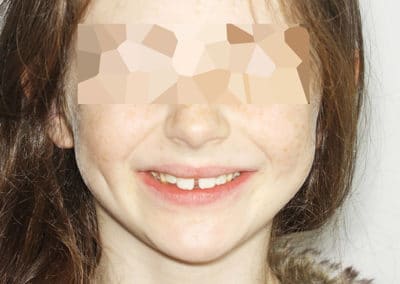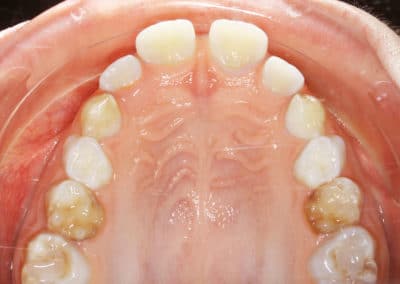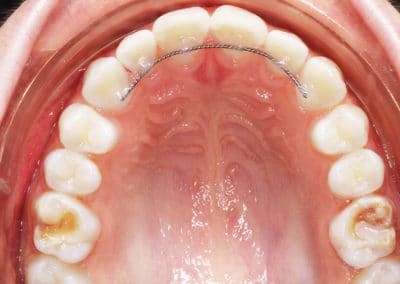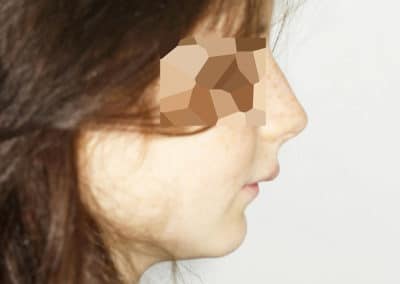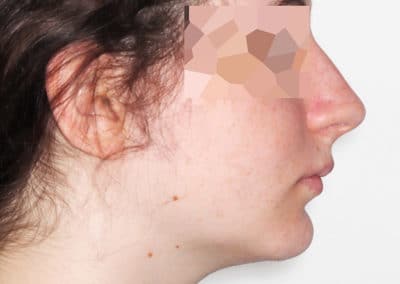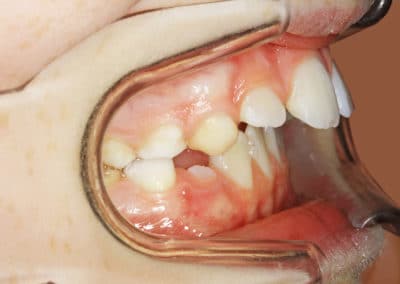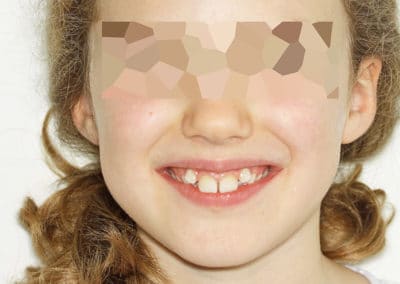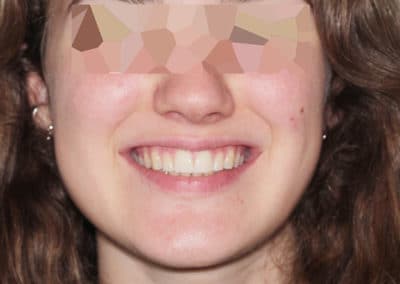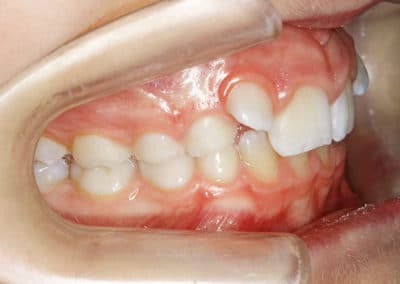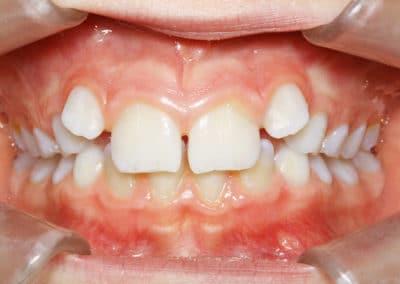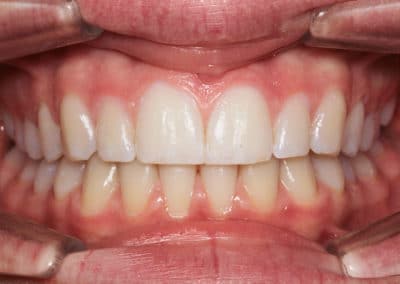Our smiles:
Ceramic
I HAVE AN ANTERIOR CROSSBITE
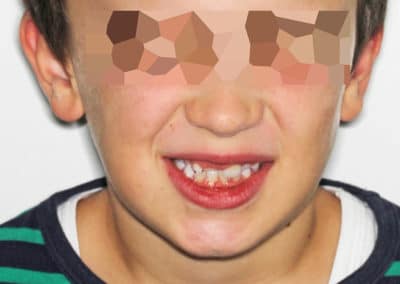
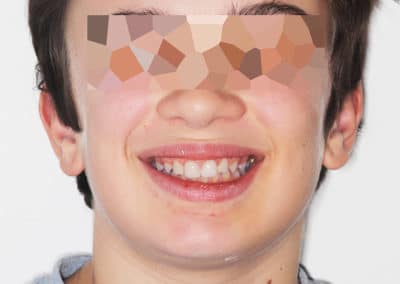

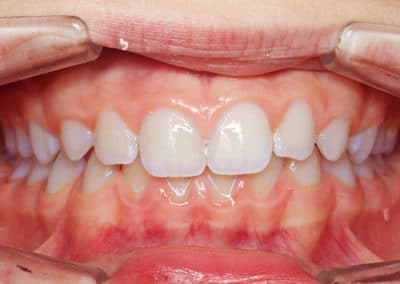
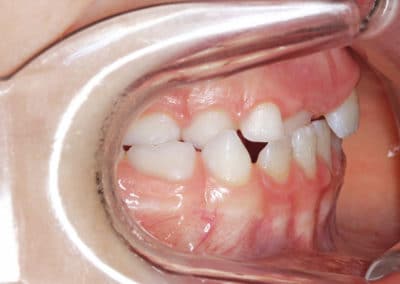
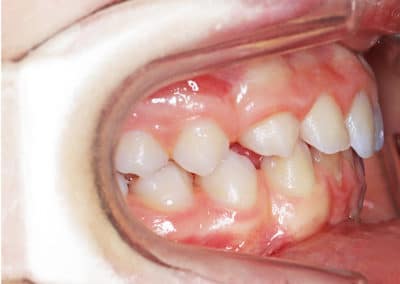

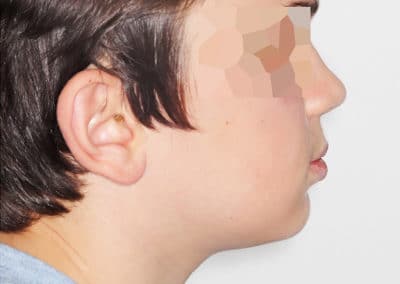
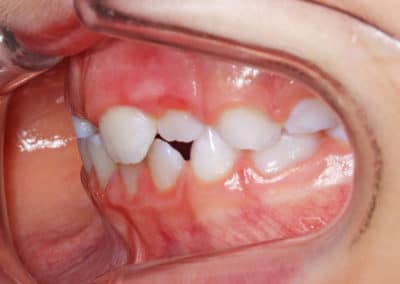
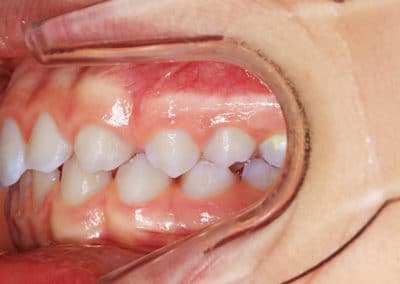
A GAP CORRECTION WITH CIRCUIT BREAKER
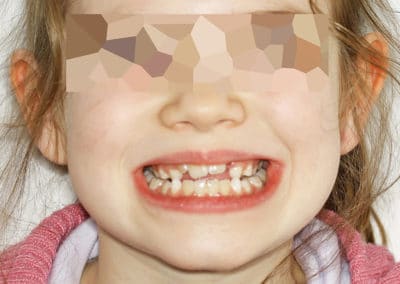
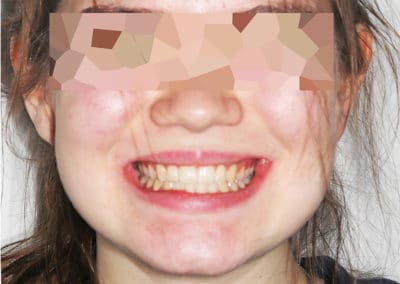
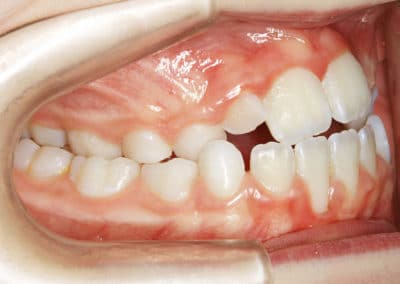
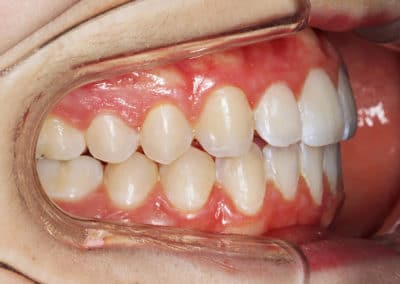
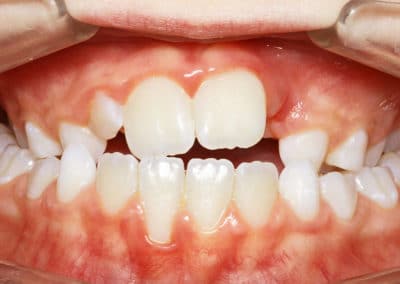
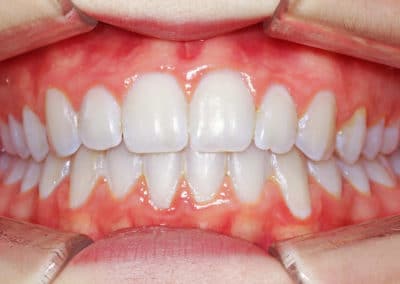
A GAP CORRECTION WITH A CIRCUIT BREAKER AND AN ANTI-TONGUE OBSTACLE
The simplified treatment plan was as follows:
- Phase 1: a circuit breaker (fixed and rigid upper jaw widening appliance with skeletal effect) associated with a retroincisal relief to prevent thumb sucking and reduce tongue interposition between the teeth.
- Phase 2: One to two years after phase 1, treatment with ceramic braces without extractions. Extractions were absolutely not necessary because the expansion and use of the space generated by the size differential between the deciduous molars and the permanent premolars was sufficient to align all the teeth. You will note that you have attached the starting and beginning photos of the second phase, but not the second phase. This illustration is quite interesting, because looking at the end of the first phase photos, one could think that there is not enough room to align all the teeth, but this is not the case.
The first phase lasted 12 months and the second phase should last about 15 months. Rigid wire restraints will then be placed on the lingual surfaces from cuspid to cuspid at the top and bottom. Safety splints will also be made.

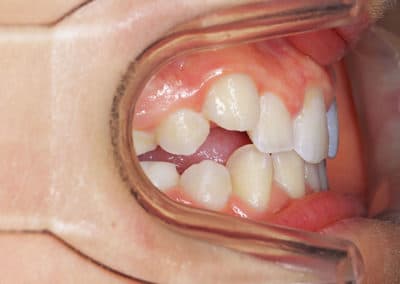
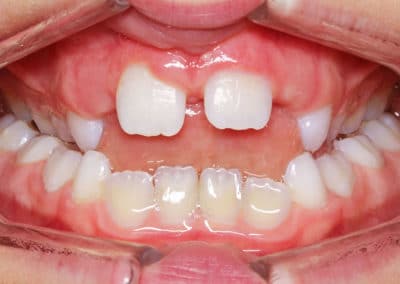
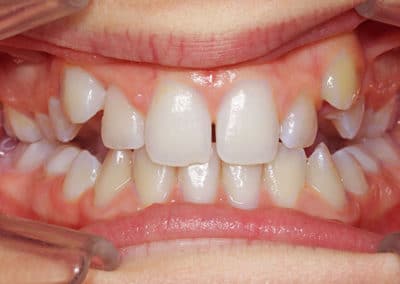
I HAVE A CROSS JOINT
The treatment plan chosen was as follows:
- Phase 1: A fixed maxillary expansion appliance, associated with anterior ceramic braces, for a period of 12 months.
- Phase 2: After a two-year interruption, the first phase of treatment has just started and should last about 15 months.
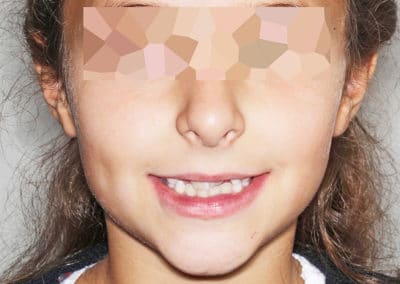
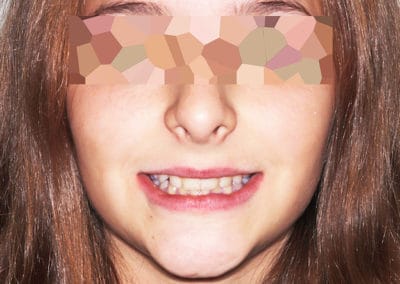

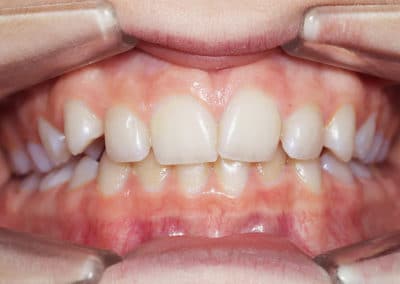
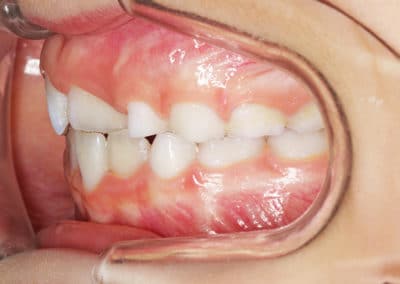
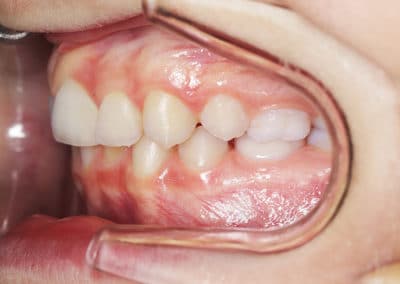
I HAVE A CROSS JOINT AND A DEVIATION OF THE LOWER JAW
- Phase 1: a circuit breaker for about ten months,
Phase 2: a global treatment with ceramic rings.
Between the two phases, there was an 18-month interruption. After an interruption of two years, the first phase of treatment has just started and should last about 15 months. Rigid wire restraints will be placed on the lingual surfaces from cuspid to cuspid at the top and bottom. Safety splints will also be made.
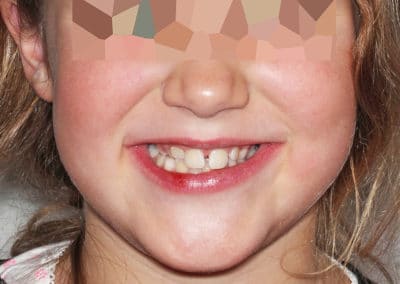
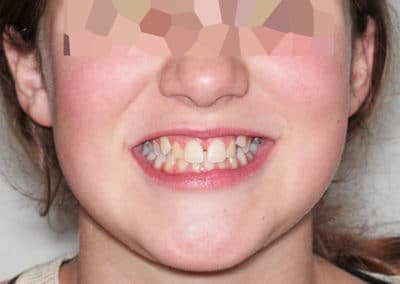
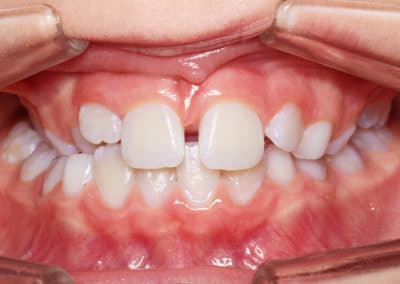
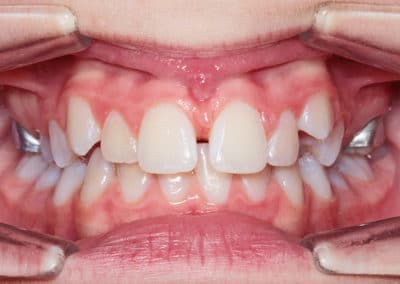
I HAVE A VERY IMPORTANT OVERHANG AND A TOTAL COVERING
Clinical and radiological examination revealed an 8-mm overhang, total overlap, and narrowing of the jaws. The treatment plan chosen was as follows:
- Phase 1: a fixed expansion and shift correction appliance for 18 months, to avoid breaking his upper teeth, followed by a break until his growth peak two years later, which was about the time his baby teeth were replaced.
- Phase 2: treatment with ceramic braces and extraction of two maxillary molars.
Rigid wire restraints were placed superiorly and inferiorly from canine to canine on the lingual surfaces. Safety splints were also made.
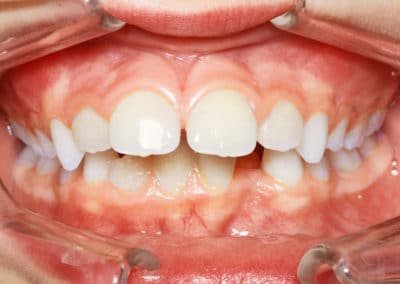

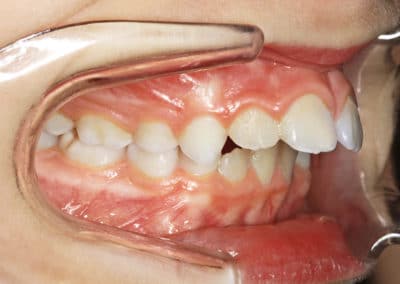
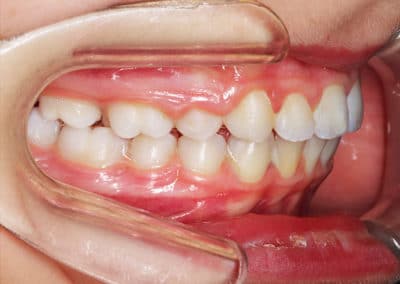
I HAVE SPACES BETWEEN MY TEETH
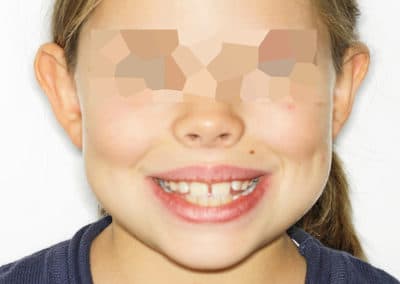
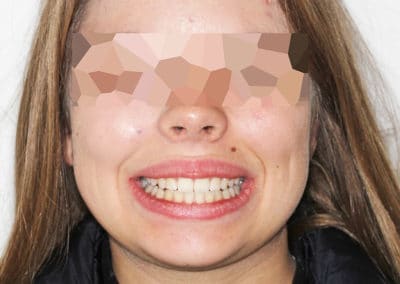
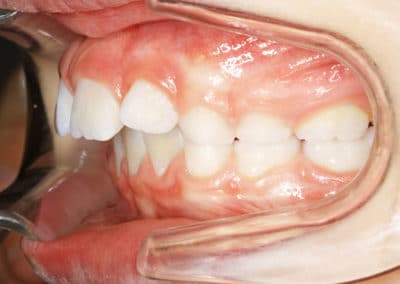
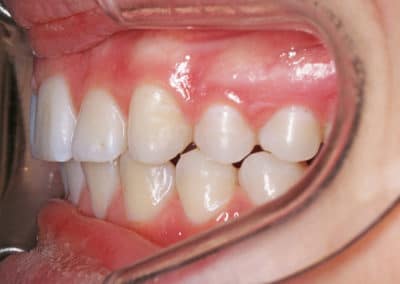
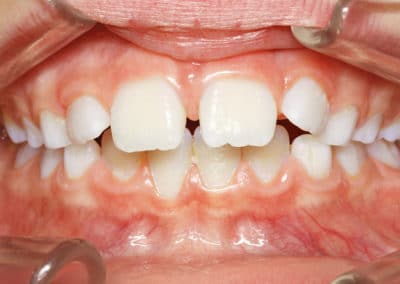
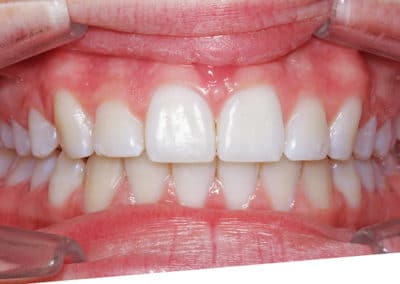
I HAVE AN OVERLAY AND AN ANTEROPOSTERIOR SHIFT
- Phase 1: 15 months fixed expansion and offset correction device, followed by a two-year break.
- Phase 2: A comprehensive treatment with ceramic braces and Class II elastics, over 15 months.
By proceeding in two phases, we avoided or reduced the risk of trauma and made the treatment phase in adolescence much shorter than if the treatment had been done in one phase. Rigid wire restraints were placed superiorly and inferiorly from canine to canine on the lingual surfaces. Safety splints were also made.
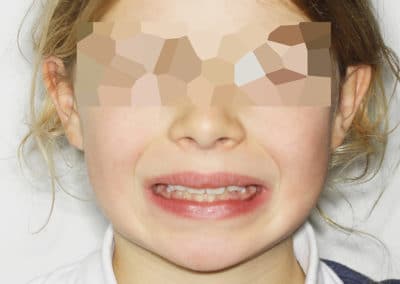
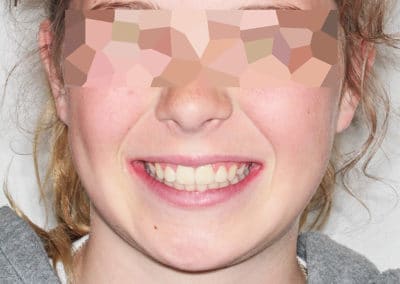
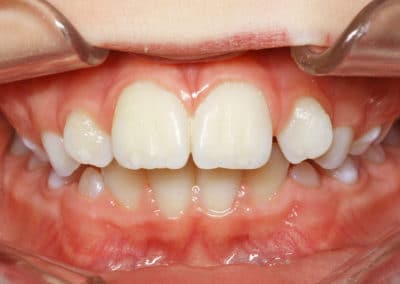
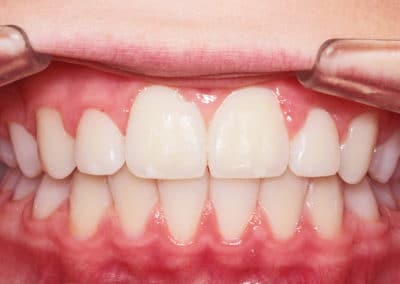

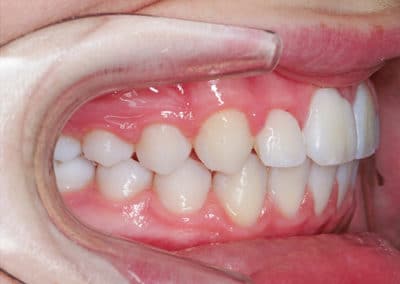
I HAVE A SIGNIFICANT GAP BETWEEN THE UPPER AND LOWER TEETH
Clinical and radiological examination revealed a significant mismatch between her upper and lower teeth, and a gap between her two incisors.
The treatment plan chosen was as follows:
- Phase 1: Expansion and correction of the offset with a fixed device, lasting 18 months followed by a one and a half year break
- Phase 2: a treatment with ceramic braces lasting 15 months.
At the end of the treatment, rigid restraining wires were placed superiorly and inferiorly from canine to canine on the lingual surfaces. Safety splints were also made.
